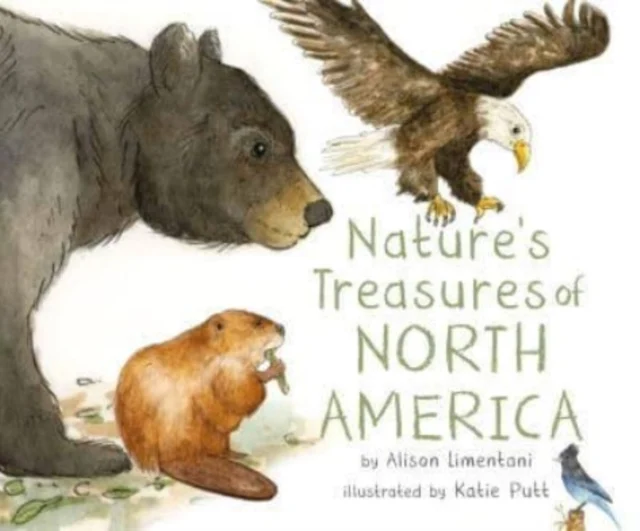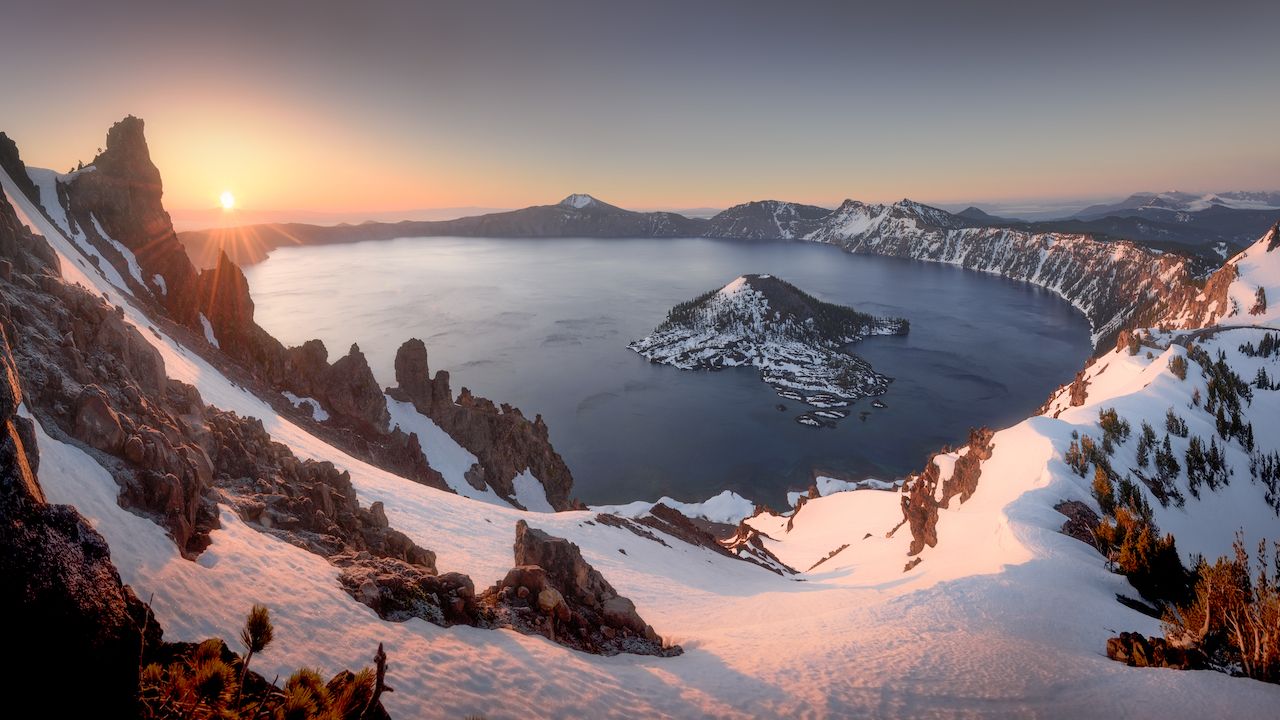What are the Natural Treasures of America? America is a land of remarkable diversity, with an array of natural treasures that span its vast expanse from coast to coast. These treasures, ranging from majestic mountains to sprawling deserts and pristine beaches, are not only iconic symbols of the nation’s natural beauty but also serve as sanctuaries for wildlife and havens for outdoor enthusiasts. This article explores some of the most breathtaking landscapes and wonders that constitute America’s natural treasures.
Table of Contents
The Grand Canyon: A Geological Marvel
Few natural wonders evoke as much awe as the Grand Canyon in Arizona. Carved by the Colorado River over millions of years, this colossal chasm stretches 277 miles long, up to 18 miles wide, and over a mile deep. The Grand Canyon’s layered bands of red rock reveal a geological history spanning nearly two billion years. Its stunning vistas and breathtaking scale attract millions of visitors annually, offering activities like hiking, rafting, and helicopter tours. The South Rim, with its easily accessible viewpoints, and the more secluded North Rim, provide diverse experiences for visitors seeking both adventure and tranquility.
Yellowstone National Park: Nature’s Wonderland
Established in 1872, Yellowstone National Park is America’s first national park and one of its most cherished natural treasures. Spanning across Wyoming, Montana, and Idaho, Yellowstone covers over 2.2 million acres of geothermal wonders, lush forests, and diverse wildlife habitats. The park’s geothermal features, including the iconic Old Faithful geyser, hot springs, mud pots, and fumaroles, are among the world’s most extraordinary. Additionally, Yellowstone is home to a rich variety of wildlife, such as grizzly bears, wolves, bison, and elk, making it a premier destination for wildlife enthusiasts and photographers.
Yosemite National Park: A Glacial Masterpiece
Yosemite National Park, located in California’s Sierra Nevada mountains, is renowned for its breathtaking granite cliffs, waterfalls, and ancient giant sequoias. The park’s iconic landmarks, such as El Capitan, Half Dome, and Yosemite Falls, attract rock climbers, hikers, and nature lovers from around the globe. Yosemite Valley, with its lush meadows and scenic vistas, offers an accessible yet awe-inspiring glimpse into the park’s natural splendor. In addition to its geological wonders, Yosemite is a sanctuary for diverse flora and fauna, including black bears, mule deer, and numerous bird species.
The Great Smoky Mountains: A Biodiversity Hotspot
Straddling the border between North Carolina and Tennessee, the Great Smoky Mountains National Park is celebrated for its rich biodiversity and mist-covered peaks. As the most visited national park in the United States, the Smokies offer a myriad of experiences, from scenic drives and hiking trails to historic homesteads and wildlife viewing. The park is home to over 19,000 documented species, including black bears, white-tailed deer, and a wide variety of plant life, making it a UNESCO World Heritage Site and an International Biosphere Reserve. The park’s scenic vistas, particularly during the fall foliage season, are among the most photographed in the country.
Also Check: The Civil Rights Movement America
Alaska’s Denali National Park: The Last Frontier
Denali National Park, encompassing six million acres of Alaska’s wilderness, is home to North America’s highest peak, Denali (formerly known as Mount McKinley), which rises 20,310 feet above sea level. The park’s vast, untamed landscapes, ranging from taiga forests to alpine tundra, offer unparalleled opportunities for adventure and solitude. Visitors to Denali can experience the rugged beauty of the Alaskan wilderness through activities such as dog sledding, wildlife viewing, and backcountry camping. The park is a haven for wildlife, including grizzly bears, caribou, moose, and Dall sheep, and its pristine environment provides a refuge for those seeking to connect with nature in its purest form.
The Everglades: A Unique Ecosystem
The Everglades, located in southern Florida, is a unique and fragile ecosystem unlike any other in the world. Known as the “River of Grass,” the Everglades is a vast, slow-moving river that supports a rich diversity of flora and fauna. This subtropical wilderness is home to species such as the American alligator, the endangered Florida panther, and a variety of wading birds. The Everglades’ mangroves, sawgrass marshes, and hardwood hammocks provide critical habitats for these species. Efforts to preserve and restore this vital ecosystem are ongoing, as the Everglades face threats from development, pollution, and climate change.

Hawaii Volcanoes National Park: Fiery Landscapes
Hawaii Volcanoes National Park on the Big Island of Hawaii offers visitors a glimpse into the dynamic processes that shape our planet. The park is home to two of the world’s most active volcanoes, Kīlauea and Mauna Loa, which continue to shape the island’s landscape with their frequent eruptions. Visitors can witness the power of volcanic activity up close, exploring lava tubes, craters, and the ever-changing terrain. The park also features lush rainforests, barren deserts, and diverse ecosystems that support a variety of plant and animal species. The cultural significance of the volcanoes to Native Hawaiians adds an additional layer of depth to this extraordinary natural treasure.
The Pacific Coast: Scenic Beauty and Marine Life
The Pacific Coast of the United States, stretching from California to Washington, offers some of the most scenic and diverse coastal landscapes in the country. California’s Big Sur, with its rugged cliffs and breathtaking ocean views, is a favorite destination for road-trippers and nature enthusiasts. Further north, Oregon’s coastline features dramatic rock formations, sandy beaches, and lush forests. Washington’s Olympic Peninsula, home to Olympic National Park, combines coastal, rainforest, and alpine environments, providing a unique and varied natural experience. The Pacific Coast is also rich in marine life, with opportunities to spot whales, sea lions, and a variety of seabirds.
The American Southwest: Deserts and Canyons
The American Southwest is a region of stark contrasts and stunning beauty, characterized by its vast deserts, colorful canyons, and unique rock formations. Monument Valley, straddling the Arizona-Utah border, is famous for its towering sandstone buttes and iconic Western movie landscapes. Arizona’s Antelope Canyon, with its narrow, winding passageways and ethereal light beams, is a photographer’s paradise. Utah’s national parks, including Zion, Bryce Canyon, and Arches, offer a diverse array of natural wonders, from towering cliffs and rock arches to surreal hoodoos and deep canyons. The Southwest’s arid landscapes and clear skies also make it an ideal location for stargazing, with some of the darkest night skies in the country.
The Great Plains: Endless Horizons
The Great Plains, stretching from Texas to the Canadian border, are often overlooked but hold their own unique beauty and significance. This vast expanse of grasslands, prairies, and rolling hills is home to a rich array of wildlife, including bison, pronghorn, and prairie dogs. The Badlands of South Dakota and Theodore Roosevelt National Park in North Dakota offer dramatic landscapes of eroded buttes, pinnacles, and spires. The Great Plains are also culturally significant, with a deep history tied to Native American tribes and the pioneering spirit of the American West.
Conclusion.
America’s natural treasures are a testament to the country’s diverse landscapes and the enduring beauty of the natural world. From the awe-inspiring grandeur of the Grand Canyon to the serene beauty of the Great Smoky Mountains, these natural wonders offer endless opportunities for exploration, adventure, and reflection. Preserving these treasures for future generations is a shared responsibility, ensuring that the splendor of America’s natural heritage remains a source of inspiration and wonder for all.


Leave a Comment